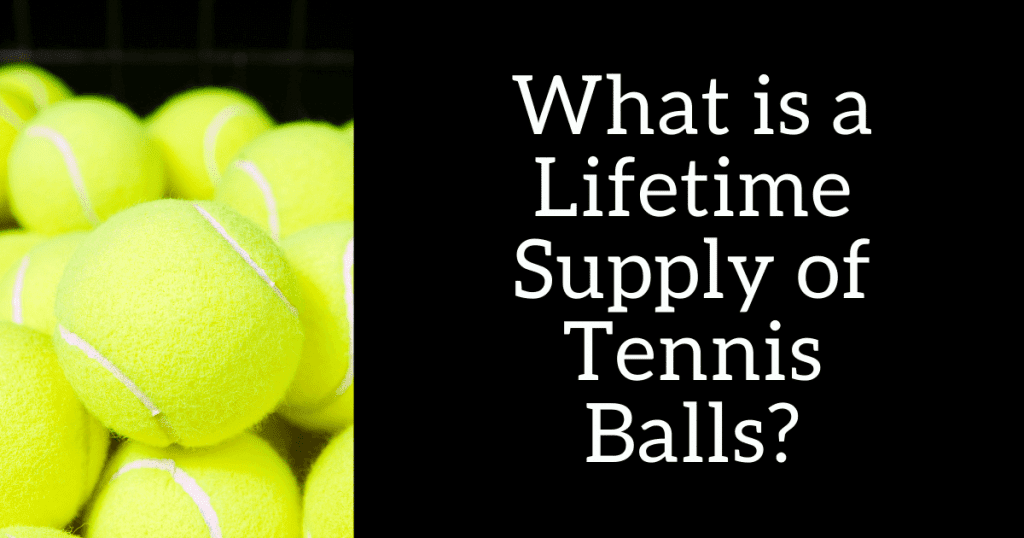You can’t really play tennis without quality tennis balls. How long should they last?
Nowadays, you can buy practically any brand of a tennis ball and you’re going to be met with similar quality thanks to modern manufacturing.
That’s good for your wallet, but there isn’t much variety out there in terms of construction.
Tennis balls are made of a rubber hull that’s filled with gas (such as nitrogen), and zinc on the surface before the felt is applied.
Let’s discuss how long you can expect them to last, and what to do with them when they’re eventually retired.
Contents
How Often Should You Change Your Tennis Balls?
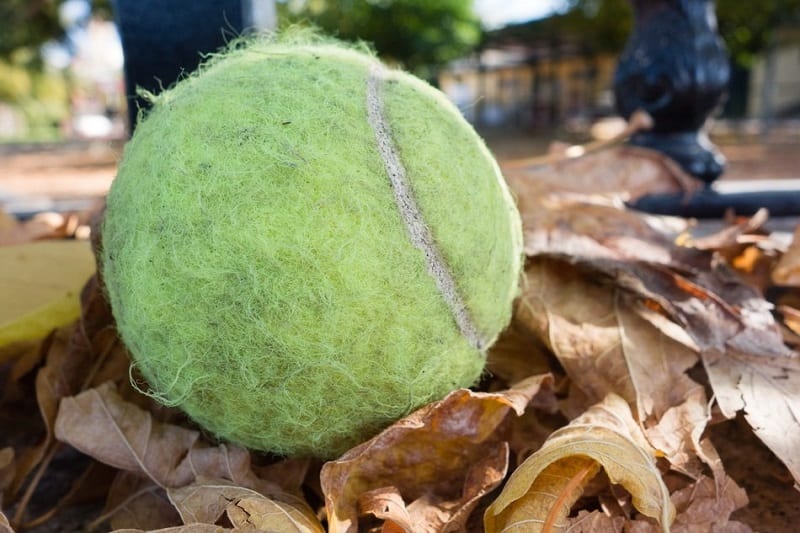
It depends on use.
How often are you playing tennis and how long are those matches?
A good rule of thumb is to analyze your own habits and retire tennis balls (individually) after about fifteen hours of play.
That means buying a three-pack canister is like purchasing forty-five hours of playtime.
If you can’t track that time or just haven’t kept tabs on which ball you’re using, that’s okay.
There’s another way to tell without having to keep track. You’ll notice performance changes to the balls as you use them which can best be determined if you ask yourself the following questions:
Does the ball “crack” loudly when it bounces?
If not, that’s a cause for concern.
Since these balls are made out of rubber, and they have to maintain a certain air pressure inside the ball, it’s fairly easy to split that rubber. After all, they take abuse from many groundstrokes, serves, and volleys and the bounce on the court after each shot.
When you think about it, it’s remarkable that a ball lasts as long as it does.
That crack sound is the pressure and vibrations in the rubber pinging off the court material.
Once that stops, it’s because the vibrations are muffled by micro-tears and cracks in the rubber surface, and the ball is on its way out.
Is the felt very worn down?
The felt isn’t the primary component of your tennis ball, but it’s a good indicator as to how much stress the ball has been through.
Look for abrasions and missing shreds of felt along the ball surface as well as faded white lines. You can expect the ball to feel less fuzzy if the felt is wearing down considerably.
Are they squishy?
You know that feeling you get when you take brand new tennis balls out of the canister? They’re firm and sturdy. That feeling should remain for quite some time.
Apply pressure to a ball with your hand. If you feel the ball buckle in your hand, there could be a gash in the rubber that’s allowing air to freely enter and exit the ball.
If the gash is big enough, you’ll have almost no bounce when you next hit the ball.
Why Are Tennis Balls Sold in Airtight Canisters?
Airtight canisters are used if the balls are pressurized.
Pressurized tennis balls contain gas (usually nitrogen) in the ball’s center.
For some balls, there’s a mixture of air and nitrogen to give different bounce.
If you’ve ever seen tennis balls sold in bulk in large bags, those are not pressurized, but pressureless.
They don’t need the environment of the air canister to keep their bounce, but they do come with a fair share of downsides.
These are usually practice balls that have a shorter lifespan (hence the huge bulk buys).
Why are Balls Changed After Nine Games in Professional Tennis?
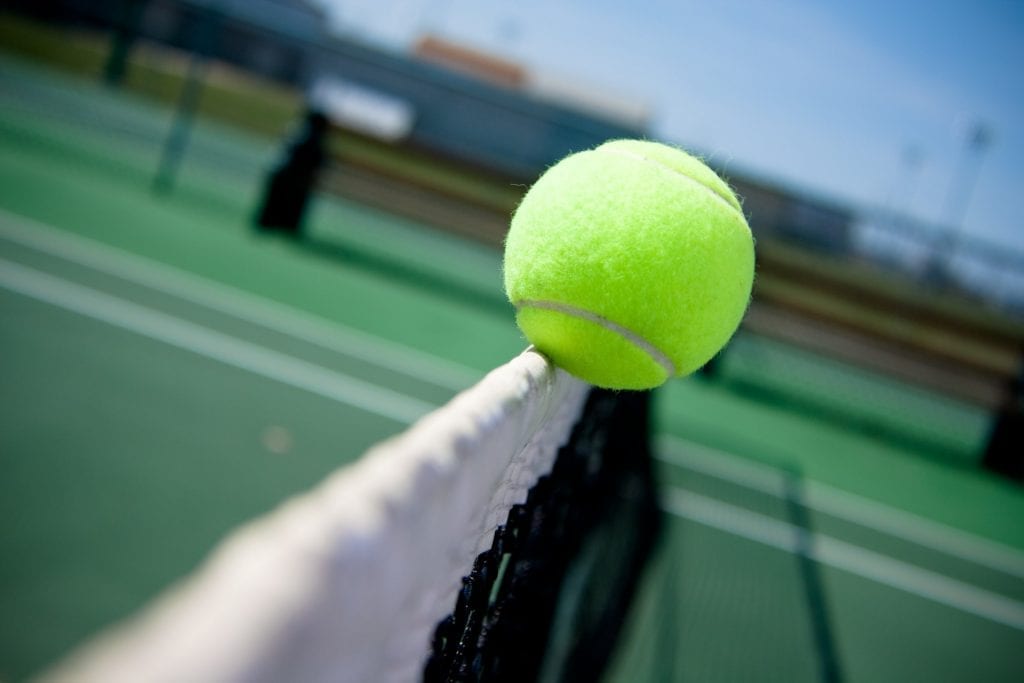
So we’ve talked a lot about the pressure in tennis balls and how quickly they lose pressure once you remove them from the can.
In professional tennis, the ATP (Association of Tennis Professionals) is the governing body for men’s tennis and the WTA (Women’s Tennis Association) is the governing body for women’s tennis.
Per regulations, tennis balls are switched out after every nine games other than the first time when they’re switched out after seven games (to account for the warm-up).
The reason for switching them out so frequently is so that players have a consistent match from start to finish with regard to the freshness of the tennis balls.
At the US Open each year approximately 70,000 tennis balls are used. That equates to more than 20,000 cans.
That’s a LOT of tennis balls.
The average recreational player will bring one can of balls for a match and use it for the entire match. Some may bring two cans, but it just isn’t cost effective for recreational players to switch out tennis balls as often as the pros do.
What Can You Do With Old Tennis Balls?
Recycle them.
There’s not much else you can do for them once they’ve lost that pop. You’re left with throwing them in the garbage, or finding a way to give back.
Here are three ways you can do this.
1. Dogs

Man’s best friend?
Dogs love tennis balls. Your local dog park is where you can find many dogs and their owners.
If you’re looking to unload a number of tennis balls, this might be the perfect place to do so.
2. Tennis Court Paving
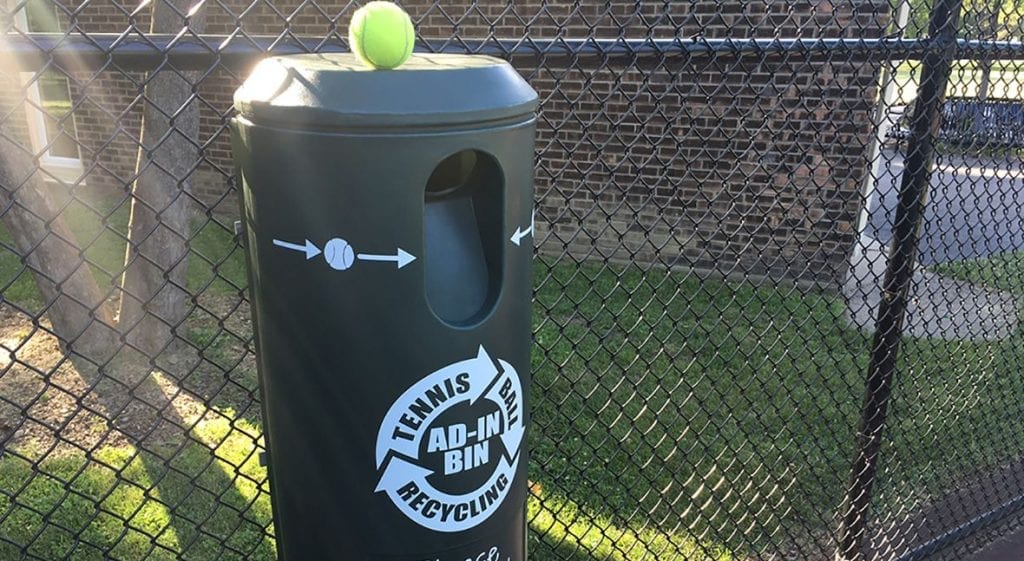
Yes, that’s right, some companies will build entirely new courts using components of recycled tennis balls.
They strip the felt away, make them malleable and pave with them.
It’s super cool, and once you play on a rubber court that’s made out of recycled tennis balls, you may never want to step on a standard hard court again!
There are organizations with missions to recycle or reuse all tennis balls used in the United States.
They have programs for facilities and individuals (with 100+ to recycle) to recycle their used tennis balls. Check them out!
Recycle Balls and Project Green Ball are two big players in this game.
3. Simple Recycling
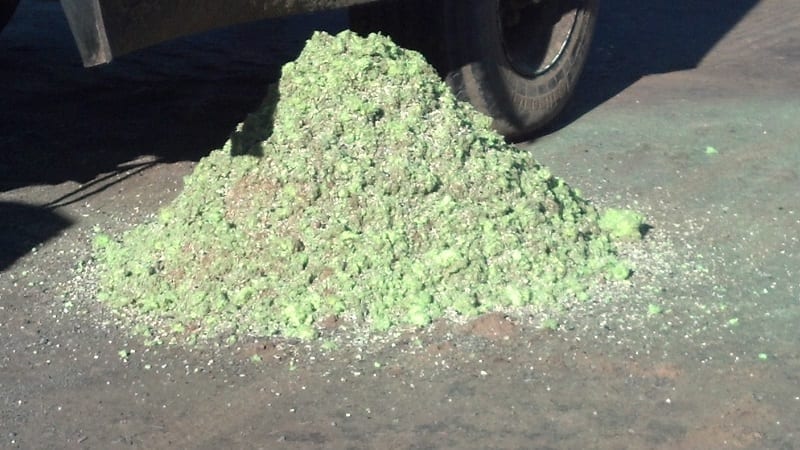
Rubber, zinc and felt are all recyclable goods in most states in the US, but you have to be careful and pay attention to your waste provider’s rules about whether or not they can be recycled.
If they are permitted with your local recycling provider, be sure to puncture them so any residual nitrogen can escape.
Rubber is a synthetic polymer what takes as long to break down as plastic. If another option exists, you shouldn’t throw them in the garbage as they take almost 400 years to decompose.
Keep a Rotating Stock of Tennis Balls
If there’s anything we’ve learned from all of this is that you need quality tennis balls to play quality tennis.
Having many on hand is just the cost of playing a sport you love.
While your tennis racket might last five or more years, no tennis ball is designed to do so.
Be sure to use a good recycling method once they’ve been retired so you can put them to good use.

